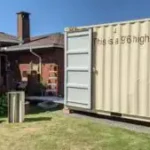Staging your home effectively can significantly enhance its appeal to potential buyers, resulting in quicker sales. By implementing some strategic updates and appealing decor choices, you can create an inviting atmosphere that resonates with viewers. To get started, check out these 15 Home-Staging Tips to Sell Your House Fast to ensure your space stands out in the competitive market. Your home is not just a place to live; it’s an opportunity to attract buyers and close deals.
Key Takeaways:
- Declutter and depersonalize your space to create a neutral environment that potential buyers can envision themselves in.
- Enhance curb appeal by maintaining landscaping, cleaning the exterior, and making necessary repairs to make a strong first impression.
- Utilize strategic furniture arrangement and effective lighting to highlight the home’s best features and maximize space perception.
Importance of Home Staging
A well-staged home can significantly influence your ability to sell quickly and at a reasonable price. Home staging is a strategic marketing tool that focuses on showcasing your property’s strengths, downplaying its weaknesses, and appealing to a broad range of potential buyers. By transforming your living space into a welcoming environment, you can create an emotional connection that encourages buyers to envision themselves living there. For more insights on this topic, consider checking out 12 Tips on How to Stage Your Home for a Quick Sale.
Enhancing First Impressions
An inviting first impression is crucial in real estate, as you typically have just a few seconds to capture a buyer’s interest. Well-chosen furniture arrangements, appealing decor, and maintained landscapes can contribute to a welcoming atmosphere that draws buyers in as soon as they arrive. You want every aspect of your home to communicate care and thoughtfulness, displaying its potential without overwhelming visitors. Remember that you are not merely selling a house; you are presenting a lifestyle, and a staged home speaks volumes to prospective buyers.
Psychological Impact on Buyers
Between the colors, space utilization, and placement of furniture, home staging can lead to a deeper psychological impact on buyers, often influencing their purchasing decisions. Staging encourages buyers to form emotional attachments to a space, as they can more readily visualize themselves and their family therein. This connection helps create a sense of belonging which can tip the scales when buyers begin comparing options. The ultimate goal is for buyers to see your property not just as a house, but as a home that meets their needs and aspirations.
Importance is placed on creating a sensory experience that allows potential buyers to feel the warmth and functionality of the space. Factors like lighting, scent, and layout all play a role in shaping a buyer’s perception of your home. Ultimately, a positive psychological impact can lead to faster sales and potentially higher offers, making home staging a worthy investment in your selling strategy.
Key Staging Techniques
Now that you have a basic understanding of home staging, it’s time to explore some key techniques that can significantly enhance your property’s appeal. Applying these methods will not only attract potential buyers but also create a welcoming atmosphere that allows them to envision their future in your home. From decluttering to strategic furniture placement, each step you take will drive you closer to a speedy sale.
Decluttering and Depersonalizing
Among the most effective staging strategies is decluttering and depersonalizing your space. Minimizing the number of personal items and unnecessary clutter can help potential buyers focus on the home itself rather than your unique style. Start by removing family photos, personal mementos, and other decor pieces that might make it difficult for buyers to imagine themselves living there. Consider renting a storage unit for items that you don’t need during the selling process, which can create a more spacious and inviting environment.
Strategic Furniture Arrangement
With the right furniture arrangement, you can highlight your home’s best features while maximizing space and flow. Consider creating a focal point in each room, such as a fireplace or a well-lit window, and arrange your furniture to draw attention to it. You should also ensure that walkways are clear and invite movement from one area to another. This will allow prospective buyers to appreciate the size and layout of your home without feeling cramped or blocked by furniture. Aim for a balance in each room by distributing furniture evenly, combining seating with decorative pieces that complement each other.
A well-thought-out furniture arrangement can transform an average room into a stunning one, making it more appealing to buyers. Take the time to measure your space and choose furniture that fits appropriately within it, avoiding overcrowding. If needed, consider temporarily removing larger items or replacing them with smaller, more proportionate alternatives to achieve a harmonious balance. This strategy not only showcases your home effectively but also invites buyers to visualize their lifestyle within the space, fostering a connection that can lead to a quicker sale.
Color and Lighting Choices
For potential buyers, the right color scheme and lighting can significantly influence their perception of your home. Optimizing these elements not only elevates the aesthetic appeal but also creates an inviting atmosphere that encourages buyers to envision themselves living in your space. When staging your home for a quick sale, your choices in color and lighting should work harmoniously to enhance the overall ambiance, making each room feel warm and welcoming.
Choosing the Right Paint Colors
One of the most impactful decisions you can make is selecting the right paint colors for your walls. Choose neutral tones like soft grays, beige, or off-whites, which tend to appeal to a broader audience, allowing potential buyers to easily envision their personal style in your home. Avoid bold colors or highly specific themes that may alienate buyers; instead, ensure your choices create a versatile backdrop that complements various decor styles. A fresh coat of paint can instantly update your space and make it feel more zesty.
Maximizing Natural Light
Choices you make regarding natural light can substantially affect how spacious and inviting your home appears. Opt for sheer or light-filtering window treatments that allow sunlight to flood into your rooms while still offering privacy. Keep your windows clean and consider arranging furniture to avoid blocking light sources, making sure that every room feels airy and open. Well-lit spaces tend to feel larger and more appealing, drawing in potential buyers who appreciate the charm of a bright, inviting home.
Due to the importance of natural light, it’s beneficial to assess how each room receives sunlight throughout different times of the day. You might consider utilizing mirrors strategically to reflect light and create an illusion of a bigger area. Enhancing your home’s natural light will not only elevate the mood but also leave a lasting impression on buyers, making them more inclined to make an offer. With these lighting enhancements, your home can showcase its best features, further assisting in securing a quick sale.
Curb Appeal Essentials
All homeowners know that first impressions count, and enhancing your curb appeal is the key to attracting potential buyers from the very start. Simple changes can make a significant difference, helping your home stand out in a competitive market. Whether it’s adding a new coat of paint or sprucing up your landscaping, these adjustments play a vital role in enticing buyers to step inside. For detailed insights, you can check out this 12 Tips on How to Stage Your Home for a Quick Sale that will guide you through effective strategies tailored for rapid results.
Landscaping and Exterior Upkeep
On your quest for a polished exterior, focus on maintaining your landscaping and ensuring the outside of your home is well-kept. Trim any overgrown shrubs, mow the lawn, and consider adding colorful plants or flowers that complement your home’s design. These elements invite prospects to visualize their future in your space. Also, check for defects in the exterior like chipped paint or worn roof shingles, as these can turn off buyers before they even step foot inside.
Front Door and Entryway Enhancements
Essentials of your home’s entrance can set the tone for everything that follows. A welcoming front door, perhaps painted in a bold color or complemented with contemporary hardware, can make your home feel inviting. Add some charm by placing potted plants on either side of the door or ensuring the entryway is well-lit. Small touches such as a clean doormat or decorative wreath can provide that instant warmth that resonates with potential buyers, reflecting the care you’ve put into your home.
But, don’t overlook the small details. Updating the door’s hardware, such as knobs and locks, can provide a fresh look and signal that your home is well-maintained. Replace any old or worn lighting fixtures by your entryway to enhance visibility and safety. Your goal is to create a space that invites buyers to feel at ease the moment they arrive, making them envision themselves living in your home.
Highlighting Key Features
To successfully showcase your home and attract potential buyers, you need to effectively highlight its key features. Start by identifying what makes your property stand out, ensuring these elements draw attention during the staging process. Focus on the following key features:
- Spacious living areas
- Natural light and window placement
- Upgraded kitchen amenities
- Outdoor spaces such as patios or gardens
- Energy-efficient installations
- Unique architectural details
- Proximity to schools, parks, and shopping centers
Recognizing these features allows you to tailor your staging efforts to accentuate their appeal, ultimately drawing in more buyers who see themselves living in your space.
Showcasing Unique Selling Points
After you’ve identified the key features of your home, the next step is to showcase unique selling points that set your property apart from others in the market. Consider aspects that are not only visually appealing but also practical. For instance, if your home has a modern kitchen, display high-quality appliances and sleek countertops that emphasize functionality. If you have a cozy reading nook with abundant natural light, arrange comfortable seating and tasteful décor that invites potential buyers to envision themselves enjoying that space.
Additionally, consider creating a narrative around these features that resonates with buyers. Share stories about family gatherings in the spacious living room or summer evenings spent on the patio. By engaging their imagination, you allow potential buyers to picture their life in your home, which can significantly enhance its desirability.
Creating Inviting Spaces
For buyers, the ambiance of a home is often just as important as its physical attributes. Creating inviting spaces involves using décor and layout to evoke a warm, welcoming atmosphere. Start by decluttering spaces to ensure they look open and inviting. Use furniture arrangements that encourage conversation and connection, such as placing sofas facing each other or adding cozy accents like throw pillows and warm lighting.
At this stage, remember to incorporate fragrance and sound to enhance the overall experience of potential buyers. Light, fresh scents can make a space feel cleaner and more inviting, while soft background music can create a comforting ambiance. By carefully curating these elements, you help buyers envision their own lifestyle in your home, making it a place they can see themselves loving for years to come.
Professional Staging vs. DIY
Keep in mind that choosing between professional staging and DIY options can significantly affect the sale of your home. It might be tempting to take a budget-friendly approach by staging your space yourself, but understanding the benefits of professional help can help you make a more informed decision that aligns with your goals.
Pros and Cons of Professional Help
| Pros | Cons |
|---|---|
| Expertise in design and layout | Higher costs involved |
| Access to unique furniture and decor | Requires scheduling and time |
| Objective perspective on your home | Less personal touch |
| Proven strategies to attract buyers | Limited flexibility in decisions |
| Efficient use of space and lighting | May need to wait for availability |
With DIY staging, you have the flexibility to personalize your home and utilize your creativity to enhance its appeal. Yet, it requires careful planning and execution to be effective. Some effective DIY staging tips can help you create a captivating environment that draws in potential buyers.
Effective DIY Staging Tips
- Declutter every room to create a sense of space.
- Neutralize paint colors to appeal to a wider audience.
- Use existing furniture and rearrange it for an optimal layout.
- Incorporate fresh flowers or plants for a welcoming atmosphere.
The staging techniques you choose can dramatically affect the first impression your home makes on potential buyers. After considering these tips, it’s vital to focus on lighting—ensure each room is well-lit to showcase its best features.
- Let in natural light by opening curtains and blinds.
- Use warm, inviting bulbs in lamps and overhead fixtures.
- Highlight focal points with accent lighting.
Staging your home effectively is all about creating a desirable environment that resonates with potential buyers. By following these DIY strategies, you can present a space that feels inviting and inspires buyers to envision their future in your home. The result is a more appealing property that stands out in a competitive market.
Summing up
Upon reflecting on the strategies outlined in ‘Staging Secrets – Transform Your Home For Quick Sales’, it’s clear that the way you present your home can significantly influence its sale potential. By employing thoughtful staging techniques, such as decluttering, optimizing lighting, and utilizing neutral décor, you can create an inviting atmosphere that resonates with potential buyers. It’s crucial to view your home from their perspective, understanding what appeals to them and how they envision their life within the space.
Ultimately, the efforts you put into staging can make the difference between a quick sale and a prolonged listing time. By taking the time to implement these transformations, you not only enhance the aesthetics of your home but also elevate its market appeal. Investing in these staging secrets can lead to a faster sale and possibly even a higher selling price, making your home stand out in the competitive real estate market. Your proactive approach will be invaluable, ensuring that your home captivates buyers from the moment they step through the door.
FAQ
Q: What is the purpose of staging a home for sale?
A: Staging a home involves preparing it for potential buyers to enhance its appeal and demonstrate its best features. The goal is to create an inviting environment that allows buyers to envision themselves living in the space. A well-staged home can lead to quicker sales and often at higher prices, as it highlights the property’s strengths while minimizing any shortcomings.
Q: How can I effectively stage my home on a budget?
A: Staging your home on a budget is possible with a few strategic steps. Start by decluttering and depersonalizing spaces to allow buyers to envision their own belongings in the home. Consider rearranging furniture to create open, inviting spaces and enhance flow. Simple enhancements like fresh paint, thorough cleaning, and adding tasteful decor, such as throw pillows or art, can make a significant difference without breaking the bank.
Q: What are some common mistakes to avoid when staging a home?
A: Some common mistakes include over-decorating or leaving personal items in view, which can distract potential buyers. Understaging is another issue, as homes lacking appeal may give a negative impression. Failing to address necessary repairs, like leaky faucets or chipped paint, can also detract from the home’s perceived value. It is necessary to present the home in its best light while creating a neutral environment that helps buyers connect emotionally with the space.





